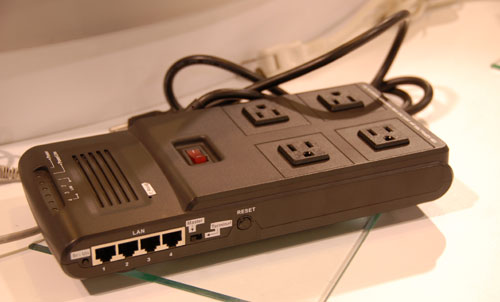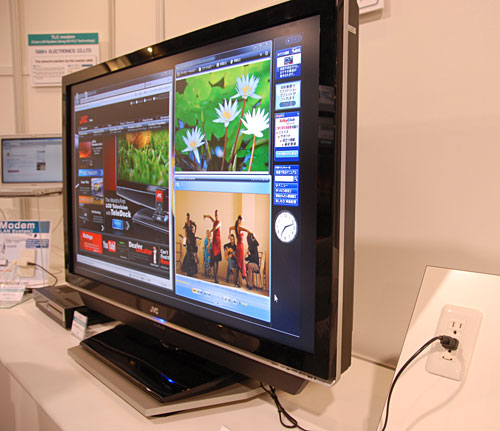
By Evan Ackerman
Most people don’t have homes that are wired with ethernet and A/V cables. This sucks if you need to move lots of data (say, streaming high def video) around your house. Yes, all kinds of wireless solutions exist, but they tend to be relatively complicated and slow compared to a physical cable. Luckily, you’ve already got perfectly serviceable wires connecting every room in your house, with electricity running through ’em. HD-PLC (High Definition Power Line Communication) uses these existing wires and piggybacks high bandwidth data along them, turning every outlet in your home into an ethernet port. Just stick a transmitter into an outlet and plug your router into it, and then plug a receiver into any other outlet in your house and out pops the internet.
HD-PLC is an alliance of a bunch of companies, including Buffalo and Philips, who are working on improving this technology. They have a variety of products either coming to market or on the market, including surge protector routers, wireless network extenders, and even TVs with integrated power line HDMI receivers, which lets the TV access HDMI streams simply by plugging it into a wall socket (which you have to do anyway to turn it on):

Power line data transmission has a bandwidth of up to 100 megabits, which is easily enough to carry three concurrent 1080p video streams plus internet, all of it encrypted. You can use surge protectors and stuff with this technology, although you have to be careful not to use surge protectors that are too good, or else they’ll cut the power line data bandwidth. As far as prices go, you can find some of this stuff in stores (and on Amazon) now, starting at under $100.
[ HD-PLC ]





Powerline networking can be great or it can suck hard. I have had some Panasonic HD-PLC adapters for some time. I currently only use one of them for my Tivo simply because the living room is the only room in the house that can get a solid connection to the powerline network. I used one adapter in the basement and the signal was extremely slow and would drop out all the time. When I moved my office upstairs, there was no signal at all in any room. It really all depends on what circuits you have in your house. You could have one level running on one circuit and the second level running on another circuit. Since they're separate circuits, they can't talk to each other at all. So yeah, powerline is a cool concept, but I much prefer wifi for anywhere connectivity.
Employing wireless networks in commercial industries has helped to shape the way we disseminate and receive information. Digital signage has been a huge factor in promoting services, branding, and assisting customers. It continues to amaze me!
Powerline networking can be great or it can suck hard. I have had some Panasonic HD-PLC adapters for some time. I currently only use one of them for my Tivo simply because the living room is the only room in the house that can get a solid connection to the powerline network. I used one adapter in the basement and the signal was extremely slow and would drop out all the time. When I moved my office upstairs, there was no signal at all in any room. It really all depends on what circuits you have in your house. You could have one level running on one circuit and the second level running on another circuit. Since they're separate circuits, they can't talk to each other at all. So yeah, powerline is a cool concept, but I much prefer wifi for anywhere connectivity.